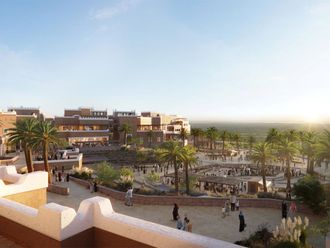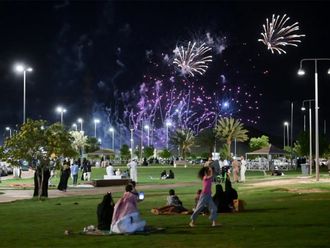Dubai: Dubai’s hotels could see stagnant growth in occupancy this year, according to Harmen de Jong, partner at property consultancy Knight Frank. Last year, hotel occupancy in the emirate grew to around 80.5 per cent for the fourth consecutive year, which was the highest level since 2008, even as new properties were completed, Knight Frank stated in its Abu Dhabi and Dubai Hospitality report for the first quarter of the year.
As a result, hotel operators have increased average daily rates, which rose at an annual average rate of 5.6 per cent between 2010 and 2013.
de Jong said that due to the limited growth in occupancy in the emirate, “[hotel operators] will capture the growth in rates rather than occupancy.”
Hotel operators will focus on attracting frequent individual travellers and reducing the number of rooms that are allocated for low-yielding segments, such as airlines, tour operators and long stay.
In the summer months, when occupancy rates drop to 60-70 per cent in city hotels, hotels that are connected to shopping malls perform relatively well, Knight Frank said in its report.
Average occupancy levels for Kempinski and the Sheraton at Mall of the Emirates, The Address at Dubai Marina Mall and Ibn Battuta Gate Hotel by Movenpick grew from 76 per cent in 2012 to 80 per cent in 2013, according to the report. These types of hotels are popular with families from the Gulf Cooperation Council (GCC) countries and transit guests.
Meanwhile in Abu Dhabi, occupancy rates rose to 71 per cent last year-the highest level since 2009- even as hotel room supply has grown at an annual average rate of 10.5 per cent between 2009 and 2013, as per the report. However, occupancy dropped slightly in 2012.
Average daily rates in the capital, however, have dropped in recent years due to increased competition between hotels, highlighted the report. It fell 52 per cent last year compared to the five previous years.
New properties that are expected to open this year include Capital Centre Rotana, Capital Centre Arjaan by Rotana and Adagio Al Bustan.
In Abu Dhabi, where occupancy can grow further, “hotel managers prefer to get more people rather than higher rates. More people means more spending on food and beverage [and] spas,” de Jong said.
According to him, if occupancy rates in the emirate grow further in the medium to long-term, hotel operators could increase room rates.
Last year, the emirate welcomed 2.8 million visitors, up 18 per cent over 2012.












